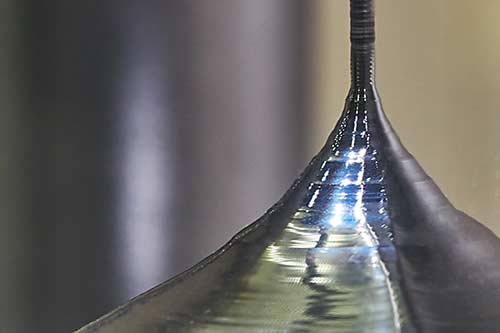The first place that relies on temperature control is the crucible. In this application, temperature can be controlled by monitoring the coils to measure the crucible temperature. This is typically straightforward and can be achieved with a fixed pyrometer like the Endurance or Mi3-100 series. However, it can be difficult to measure crucible temperatures accurately due to reflections, but by holding the system at a pre-determined temperature, you can use a two-color pyrometer to get an accurate temperature reading.
The second spot that relies on temperature control is the melt temperature. Here, the polysilicon ingot begins to melt and is pulled upward to form a singular crystal. Because of this, you must monitor the product in multiple places, perpendicular to the machine, to control the melt. The best tool for this application varies depending on your process; however, a two-color fixed pyrometer is typically suitable.
The third area is diameter control. Here, users need to control the diameter of the crystal (meniscus) as it is pulled upward. Diameter control is critical in ensuring the final product, as any mistakes could result in the entire silicon rod being discarded. In some crystal growing facilities, a 1-micron sensor (such as the Endurance)* is efficient. At other sites, a one-color sensor such as the Mi3-100 series may be the best option. Overall, it comes down to how your process is setup, your needs and what can best integrate with.
*Note: Fluke Process Instruments also offers a fiber-optic Endurance sensor that may be suitable for your application.




